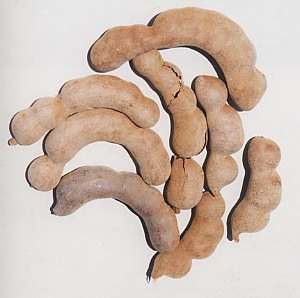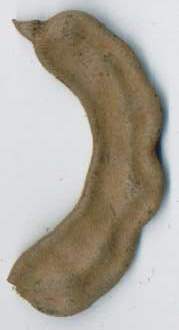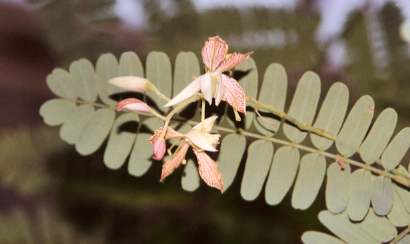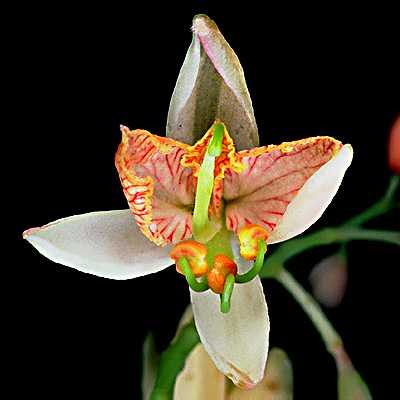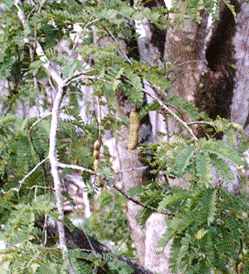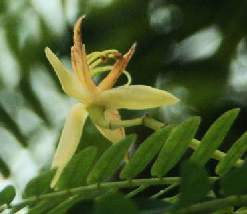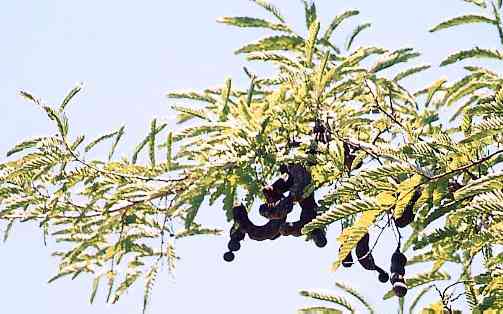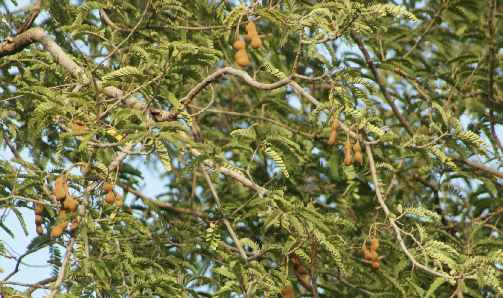
|
| Tamarind tree |

|
| Tamarind flower |
The sour and fruity taste of tamarind merges well with the heat of chiles and gives many South Indian dishes their hot and sour character, and their dark colour. In India, tamarind is mostly combined with meat or legumes (lentils, chick peas or beans). The pulp is sold dry and must be soaked before usage. Only the water is then added to the food. Alternatively (and more comfortably), tamarind extract may be used with the same effect.
A well-known example of a Southern Indian dish employing tamarind is
vindaloo (vindalu [विंदालू]), a fiery pork stew
from Goa. Goa is an Indian union state on the West coast with a large proportion
of Christans, having been a Portuguese colony until the 1960s; as a Portuguese
heritage, pork is very popular in Goan cooking.
Basically, vindaloo is a spicy, tropical version of
Portuguese porco vinho e alho (see
garlic): Pork is marinated with a paste made from
vinegar (instead of the original wine), ground onions,
garlic, ginger and a host of spices
(chile, cloves,
cinnamon, pepper,
cumin, toasted black
mustard seeds) for several hours and then, together with the marinade
and tamarind water, stewed until tender. Variants with poultry instead of
pork are popular with
Hindus and Muslims. Outside of India, the recipe is often bastardized by
adding potatoes due to confusion with Hindi alu [आलू] potato
.
Another South Indian food employing tamarind
is the vegetable rice dish bese bele from Karnataka
(see coconut).
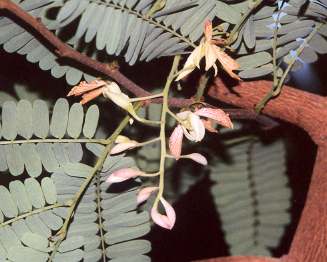
|
| Tamarind flowers |
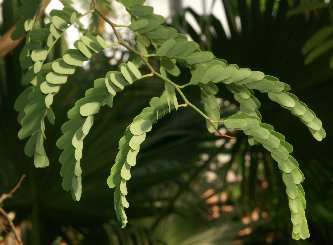
|
| Tamarind foliage |
Soups in the European sense have no tradition in India; yet all South Indian states enjoy a special kind of spice broth with a delightfully fresh, tart and spicy flavour; it is known as rasam [ரசம்] in Tamil and as saru [ಸರೂ] in Kannada. It consists of a long and slowly simmered broth made from fresh (coriander, curry leaves, garlic, ginger and dried (cumin, coriander, chiles, pepper) spices plus some red lentils and a good amount of tamarind. Before serving, some more fried spices may be mixed in, or alternatively a few tomato slices or (preferred in Andhra Pradesh) a few dark brown, crispy fried dried chiles may enter the pot. Rasam is eaten with rice, like any curry.
Mulligatawny soup, an Anglo–Indian recipe, is basically an adaption of rasam augmented with boiled chicken meat, although contemporary recipes have gone a long way from that origin.
On Jawa, Indonesia’s most populous island, tamarind is taken as basis for spicy
and sometimes sweet pastes used to marinade meat or soy bean cheese
(tahu) before frying. A typical mixture might contain tamarind
water besides soy sauce, garlic and possibly ginger and galangale; chiles, of course, are added up to taste.
| ||
|
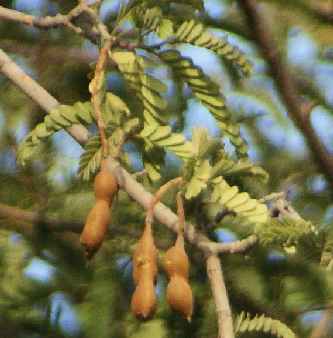
|
| Tamarind pods |
Jawanese food is unique in Indonesia for its sweet–sour compositions, but the sweet–sour taste is much less dominant than in some Chinese recipes. For the sour taste, tamarind is preferred to limes, and as sweeteners palm sugar (see coconut) and the sweet soy sauce typical for Indonesia (kecap manis) are most popular. Other ingredients responsible for the particular character of Jawanese food are fermented shrimp paste (trassi) and peanuts, which are ground to a paste and added to many sauces. Frequently, sweetness is more pronounced than acidity.
Although only a small minority of Western consumers knows tamarind today,
there is still one product containing tamarinds that has gained some importance
in international cuisine: Worcester sauce, which may be called Indian
inspired
in the same way as curry powder. See cloves for details.
In peninsular Southeast Asia (Vietnam and Thailand), the pods are both used
ripe and unripe; in the fresh state, their tartness is less fruity and more
astringent. Fresh tamarind pods cannot be dried or otherwise preserved,
except by deep-freezing. Tamarind is often used for acidic soups, which
are very refreshing in the tropical climate of Vietnam and Cambodia. See
also rice paddy herb.
